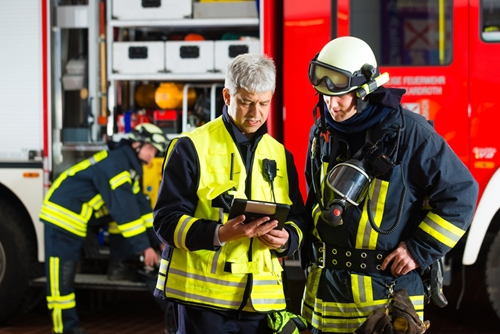With technology progressing rapidly in recent years, it seems appropriate that first responders and emergency personnel, in general, should reap the benefits of new developments. It's hard to think of work more important than the duties these brave individuals take on every day, so advanced software and hardware developments that could improve their success rate and keep them safe in the field are clearly worth pursuing.
"First responders will have a variety of exciting new options."
If there is one theme to tech development today, it is that every kind of item is up for reinvention. From backend software systems to everyday devices, consumer-friendly products to industrial-use-only assets, these are all fair game. First responders will have a variety of exciting new options in the years ahead.
Real-time tracker goes beyond GPS
The Mercury News recently highlighted an exciting new solution that could overcome the problems with conventional GPS tracking and help first responders when responding to fires in buildings or carrying out underground rescues. The NASA Jet Propulsion Laboratory is hard at work on the solution, which is called Precision Outdoor and Indoor Navigation and Tracking for Emergency Responders, or POINTER. The product is based on using electromagnetic fields to project location data, even through steel walls or the ground, obstacles which hamper GPS reception.
POINTER could become a go-to position-tracking option in time, provided responders have access to the schematics of buildings they want to see inside of. The Mercury News pointed out that despite its great future potential, it isn't quite ready for use. As of now, the tech is large – approximately the size of a backpack. The next step for NASA's team is to make a receiver the size of a modern cellphone.
The Jet Propulsion Laboratory is also developing technologies that will pair well with POINTER, such as an artificial intelligence system called AUDREY. According to the news provider, the latter solution is based on analyzing real-time information and feeding first responders information automatically. Combining the two systems could help firefighters get out of compromised structures effectively, among other emergency-response applications.
Drones to the rescue
The Richmond Times-Dispatch reported on another tech innovation in the public safety sector, this one already in limited use: drones. From aerial fire observation to detailed searches for missing persons, drones can provide a set of eyes that travel in three dimensions, letting emergency personnel reach places they can't go in person. With the technology so young, departments are just learning the best practices of drone operation, which are becoming clearer due to trailblazing work by early-adopter agencies.
The news source explained that organizations are trying to ensure wider use of drones goes smoothly, with Virginia emergency agencies working toward a set of unique regulations, standards and protocols. Whenever a new technology enters use, there is a need to ensure it is used in a consistent and safe fashion, and adjusting rules to suit the new assets is a natural stage of this process. As long as there are good use cases for the technology, such an adjustment period is worth it.

